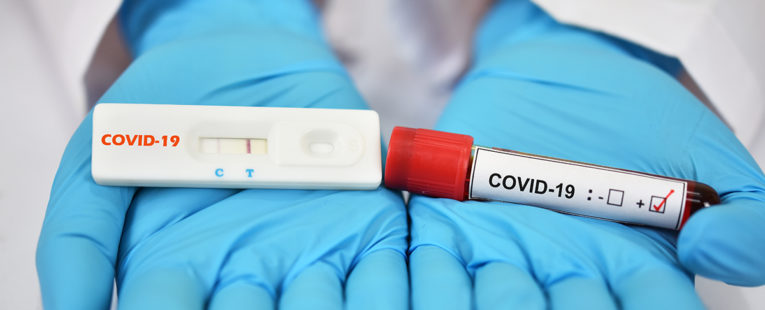
The Centers for Medicare & Medicaid Services' (CMS), has launched a new Hospice Compare website. This will make it easier for patients, family members, and others to compare hospice providers. The website is intended for consumers to better understand hospice care, and encourage them take part in care decisions. It puts more pressure on hospice care providers to provide quality care.
The Hospice Compare website is based upon information submitted by 3,876 Hospices. The website provides an overview of the quality of hospice care and includes Hospice Item Set results (HIS). The website includes a search feature that allows consumers to search for hospices by name, zip code, or other criteria. It also lists providers at risk of being shut down by Medicare. This site also provides information about hospices providing services for patients with a prognosis of less than six months.

Hospice Item Set (HIS), quality measurements are based the Hospice Consumer Assessment of Healthcare Providers and Systems. The CAHPS survey asks questions about pain and symptoms management, patient communication, nursing procedures, and coverage. Certified independent evaluators can also conduct a caregiver survey. The results of the CAHPS survey are used to develop Hospice Compare. It will include seven HIS measures that date back to October 2015 and September 2016. The results of the CAHPS Hospice Survey will not be reported until early CY 2018.
Hospice Compare was designed to be simple to use. This allows providers to get the information they need in order to make informed care decisions. This website is mobile optimized and follows best industry practices for consumer-facing sites. Hospice Compare does not have a live update. It will take some time for the data changes to be reflected in real-time. CMS is currently testing various measures and will continue improving Hospice Compare.
Providers can also access preview reports of Hospice Item Sets (HIS) data through Hospice Compare's website. Providers will have to submit the HIS with inactivation, modification and correction records before the 4.5-month data correction deadline. They can also access the preview reports through the CASPER software. Once a provider accesses a preview, they can view data on a quarterly base. After 60 days, providers won't be able access the data.
A newsletter is also available on the website. The Friends of Hospice newsletter goes out to hospice providers and others who are interested in the subject. It includes articles and information about current research related to the end stages of life. It contains educational materials for families and patients. It also contains a directory of hospices in your locality.

Hospice Compare has recently been updated with the CAHPS Hospice Survey's results. This new measure is called "Hospice visits when death is imminent". This three-day measurement measures the percentage who received at least one visit within the last 3 days of life. This measure is accompanied by a fact sheet as well as a Q&A document.
FAQ
What does "public", in the context of public health, mean?
Public health is about improving and protecting the health of the entire community. It includes preventing disease, injury and disability, encouraging good health practices, providing adequate nutrition, and controlling communicable diseases and environmental hazards.
How can I become a creative professional in the field of health?
You have many options to become a creative healthcare professional. Many people begin their career as students. Others start out in business or engineering.
Some people choose to take a course in a particular topic, such as leadership, management, and health policy. Some elect to study an elective course which explores different perspectives of health and care.
No matter what path you choose, you will be learning about topics related to healthcare through lectures, readings group discussions, assignments, projects, and assignments. There are workshops, conferences, as well as seminars.
Once you have completed the program, your knowledge will allow you to work with patients, clients, colleagues and clients in any position within the health system.
You might even be able to go on to get a doctorate.
What is my role within public health?
Participation in prevention programs can help you and others protect their health. Reporting injuries or illnesses to the health professionals can help improve public health and prevent future problems.
Statistics
- Price Increases, Aging Push Sector To 20 Percent Of Economy". (en.wikipedia.org)
- Foreign investment in hospitals—up to 70% ownership- has been encouraged as an incentive for privatization. (en.wikipedia.org)
- For the most part, that's true—over 80 percent of patients are over the age of 65. (rasmussen.edu)
- The health share of the Gross domestic product (GDP) is expected to continue its upward trend, reaching 19.9 percent of GDP by 2025. (en.wikipedia.org)
- Consuming over 10 percent of [3] (en.wikipedia.org)
External Links
How To
What is the Healthcare Industry Value Chain
The entire healthcare industry value-chain includes all activities related to providing healthcare services to patients. This includes both the business processes in hospitals and clinics, as well the supply chains that connect them with other providers like doctors, pharmacists, insurers, manufacturers, wholesalers, distributors, etc. The end result is a continuum, which begins with diagnosis and ends at discharge.
The value chain is made up of four major components:
-
Business Processes - These consist of the tasks performed by individuals throughout the entire process of delivering health care. A physician might order medication for a patient, then perform an examination. Every step must be done efficiently and accurately.
-
Supply Chains are all the organizations responsible for making sure the right supplies reach their intended recipients at the right time. A hospital might have several suppliers. These could include lab testing facilities, imaging centres, pharmacies, or even janitorial personnel.
-
Networked Organizations: To coordinate these entities, it is necessary to have some means of communication between them. Hospitals have many departments. Each has its own number of phones and offices. Each department will have its own central point, where employees can get updates and ensure everyone is informed.
-
Information Technology Systems – IT is crucial in order to ensure that business processes run smoothly. It is essential to ensure that business processes run smoothly. Without IT, everything would be a mess. IT is also a platform that allows for the integration of new technologies into the system. For example, doctors can use a secure network connection if they want to integrate electronic medical records into their workflow.